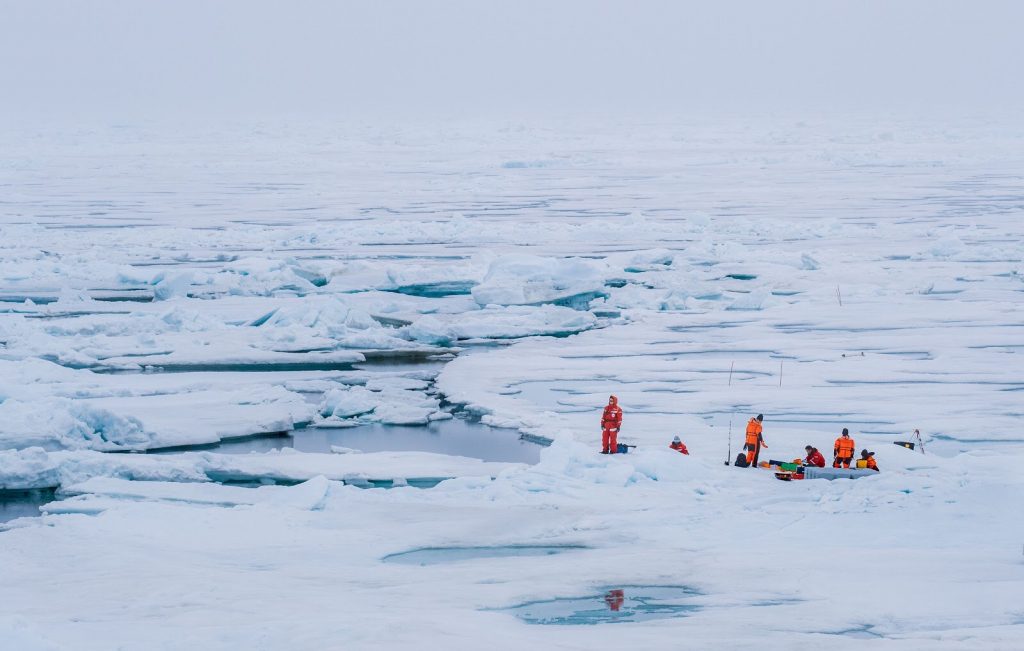by Matthew Shupe, CIRES/NOAA scientist and co-coordinator of MOSAiC
It’s so great to see so many eager scientists out here. The routine, long-work-days-with-little-sleep has apparently not been enough for everyone and there has been a push for conducting a 24-hour measurement cycle. Originally the motivation for this extended measurement period was the daily change in the surface we’ve been seeing. Last week there would be periods of the day when melt was rampant, but then periods when the surface would freeze. Thin layers of ice would form on the top of melt ponds. That phenomenon has shifted now and we are not really seeing major shifts during the day anymore; the system appears to be mostly in a permanent melt state. However, there is still diurnal variability. For example, there is about 4-5 times as much solar input to the surface at the solar noon relative to the solar midnight (though even at solar midnight there is substantial sunlight, which somehow finds a way to creep in through my blinds at night!). In any case, diurnal variability has motivated people to go for a 24-hour cycle, from noon yesterday until noon today. Add in the regular daily operations (starting 9 am yesterday and ending 5:30 pm today) and we really had a 32.5-hour sampling period. Lots of coordination of activities; people going out on the ice at all hours of the night. Extra activities. Many more samples. A special tent was set up on the ice for resting and coffee. And there were lots of volunteers for so many different tasks; so many extra hands needed to pull this off. I spent time maintaining my own measurements as usual. But also helped with some balloon operations with this immense tethered balloon called Beluga. Then I went for a couple hours to Ocean City where they were doing continuous profiles down then up to monitor the evolution of the ocean structure. At night I stayed up until 3am, taking the first slot of the cruise leadership position while Markus slept for a few hours. I was then able to sleep after 3am until my bear guarding at 8am for a team recovering some sediment traps at 8am. Then back onto routine maintenance and checks on our operational equipment. Lots of work. Lots of science. In looking at our data, there wasn’t much variability in some of the near-surface energy transfer. But it will be interesting to see what the other work reveals about ocean structure, atmospheric boundary layer development, ecosystem functionality, and more.


